What if you could see the future of your business? Imagine knowing which customers are likely to buy again, what products will be popular next season, or which marketing campaigns will bring the best results. This is not science fiction. This is the power of predictive analytics, and it is no longer just for big corporations. Small businesses can now use this tool to make smarter decisions and fuel significant growth.
Predictive analytics uses your existing data, like sales history and customer behavior, to find patterns and forecast future outcomes. Think of it as a crystal ball for your business, but one based on facts and numbers. By understanding what is likely to happen, you can take proactive steps to grow your company, improve customer satisfaction, and increase your profits.
This guide will show you how predictive analytics can work for your small business. We will explore simple ways to use it, look at real world examples, and give you practical steps to get started.
Understanding Predictive Analytics
At its core, predictive analytics is about making educated guesses. It takes the information you already have and uses it to predict what might happen next. This process involves collecting data, analyzing it for trends, and then building a model that can forecast future events.
For a small business, this data can come from many places. Your sales records, website traffic, customer emails, and social media interactions are all valuable sources of information. By putting this data to work, you can move from making decisions based on gut feelings to making choices backed by solid evidence.
You do not need a team of data scientists to begin. Many modern tools and platforms make predictive analytics accessible and affordable for businesses of all sizes. The key is to start small, focus on a specific goal, and build from there.
How Predictive Analytics Drives Growth
Using predictive analytics helps you understand your customers and your business on a much deeper level. This understanding translates directly into smarter strategies that can accelerate your growth.
Personalized Customer Experiences
One of the most powerful uses of predictive analytics is personalizing the customer journey. By analyzing past purchase behavior, you can predict what a customer might be interested in next.
A local online bookstore, for example, could use this. They can see a customer has bought several mystery novels. Their system can then automatically recommend a newly released thriller or send a special offer for a book by a similar author. This personal touch makes the customer feel understood and valued, increasing the chances of another sale and building long term loyalty.
Optimizing Your Marketing Efforts
Are you spending your marketing dollars in the right places? Predictive analytics can help you answer that question with confidence. It can analyze the performance of past campaigns to predict which channels and messages will resonate most with your target audience.
Consider a small coffee shop. They could analyze data from their loyalty program and social media to see which promotions drive the most foot traffic. They might find that a “buy one, get one free” offer on a Tuesday morning is far more effective than a percentage discount on a weekend. Armed with this knowledge, they can focus their budget on what works, maximizing their return on investment.
Better Inventory Management
Running out of a popular product or being overstocked with a slow seller can hurt your bottom line. Predictive analytics helps you forecast demand with greater accuracy.
A small clothing boutique could use past sales data, combined with information about seasonal trends and even local weather forecasts, to predict how many winter coats they will sell. This allows them to order the right amount of stock, avoiding costly markdowns on unsold items and preventing lost sales from stockouts. It ensures they have what customers want, right when they want it.
Getting Started with Predictive Analytics
Bringing predictive analytics into your business might seem daunting, but you can start with a few simple steps. The goal is to begin collecting and using your data to make small, informed improvements.
1. Define Your Goal
First, decide what you want to achieve. Do you want to increase customer retention, improve marketing ROI, or optimize your inventory? Focusing on a single, clear objective will make the process more manageable. A clear goal helps you identify the data you need and the questions you need to answer.
2. Collect Your Data
Start gathering data from your existing systems. This includes your point of sale (POS) system, customer relationship management (CRM) software, website analytics, and social media platforms. Make sure the data is clean and organized. Even a simple spreadsheet can be a powerful tool when you are just starting out.
3. Choose the Right Tools
You do not need to build a complex system from scratch. Many user friendly tools can help you analyze your data and make predictions. Platforms like Google Analytics offer some predictive capabilities. Many email marketing services have features that can predict customer engagement. Look for software that integrates with the systems you already use and offers a simple interface.
4. Analyze and Act
Once you have your data and tools, start looking for patterns. For instance, do customers who buy a certain product often return to buy another specific item? Use these insights to take action. You could create a product bundle, send a targeted email campaign, or adjust your inventory.
5. Measure and Refine
The final step is to measure the results of your actions. Did your targeted email campaign lead to more sales? Did your inventory adjustments reduce waste? Use these results to refine your approach. Predictive analytics is not a one time task. It is a continuous cycle of learning and improvement.
A Final Word
Predictive analytics offers a powerful way for small businesses to compete and grow. By using the data you already have, you can make smarter, more strategic decisions that lead to better outcomes. You can build stronger relationships with your customers, optimize your operations, and unlock new opportunities for your business.
The journey starts with a single step. Begin by identifying a clear goal, collecting your data, and using simple tools to uncover valuable insights. You might be surprised by what your data has to tell you about the future of your business.
We Want To Talk To You About Your Marketing Goals.
Let’s Supercharge Your Online Growth!












